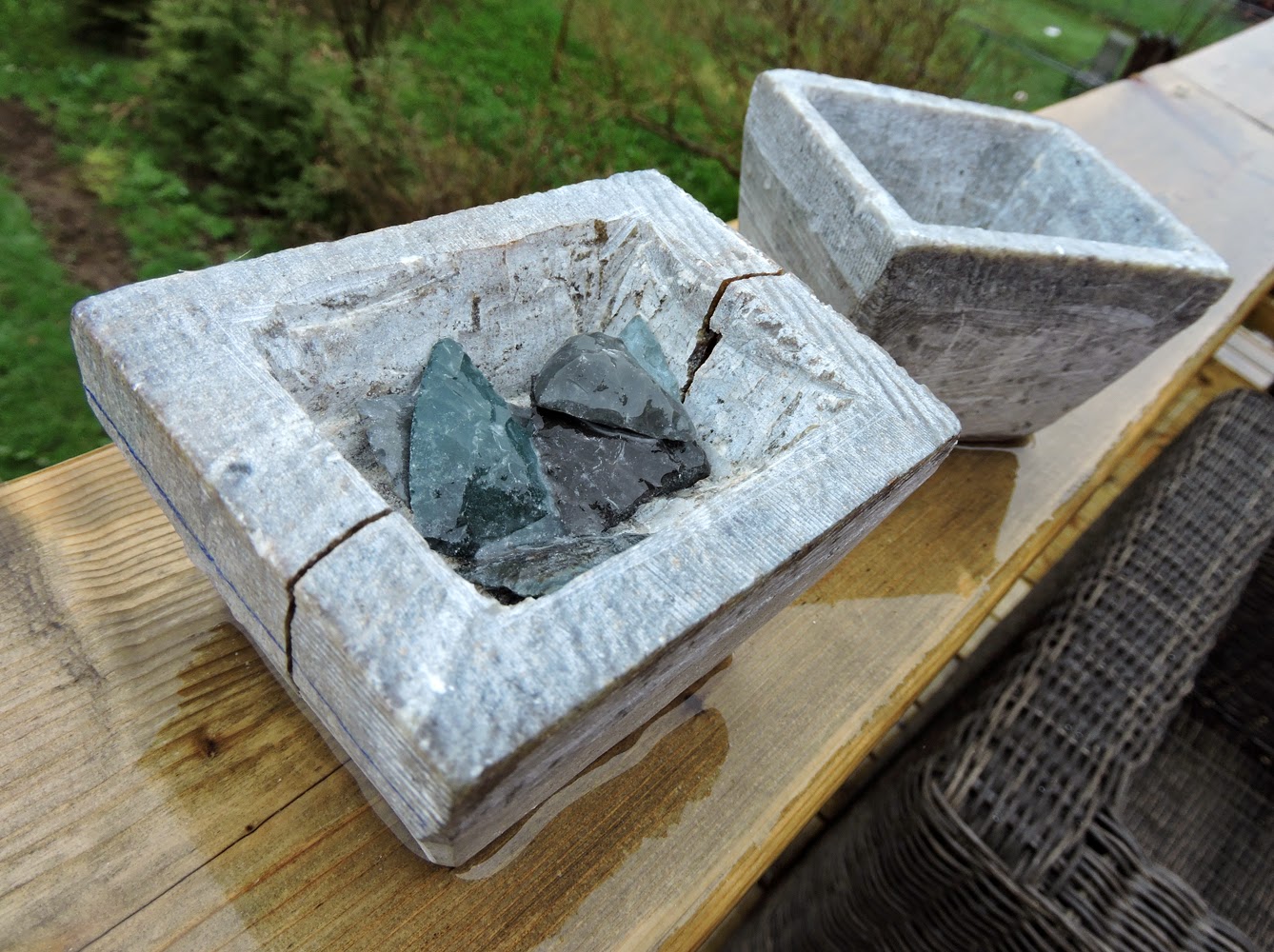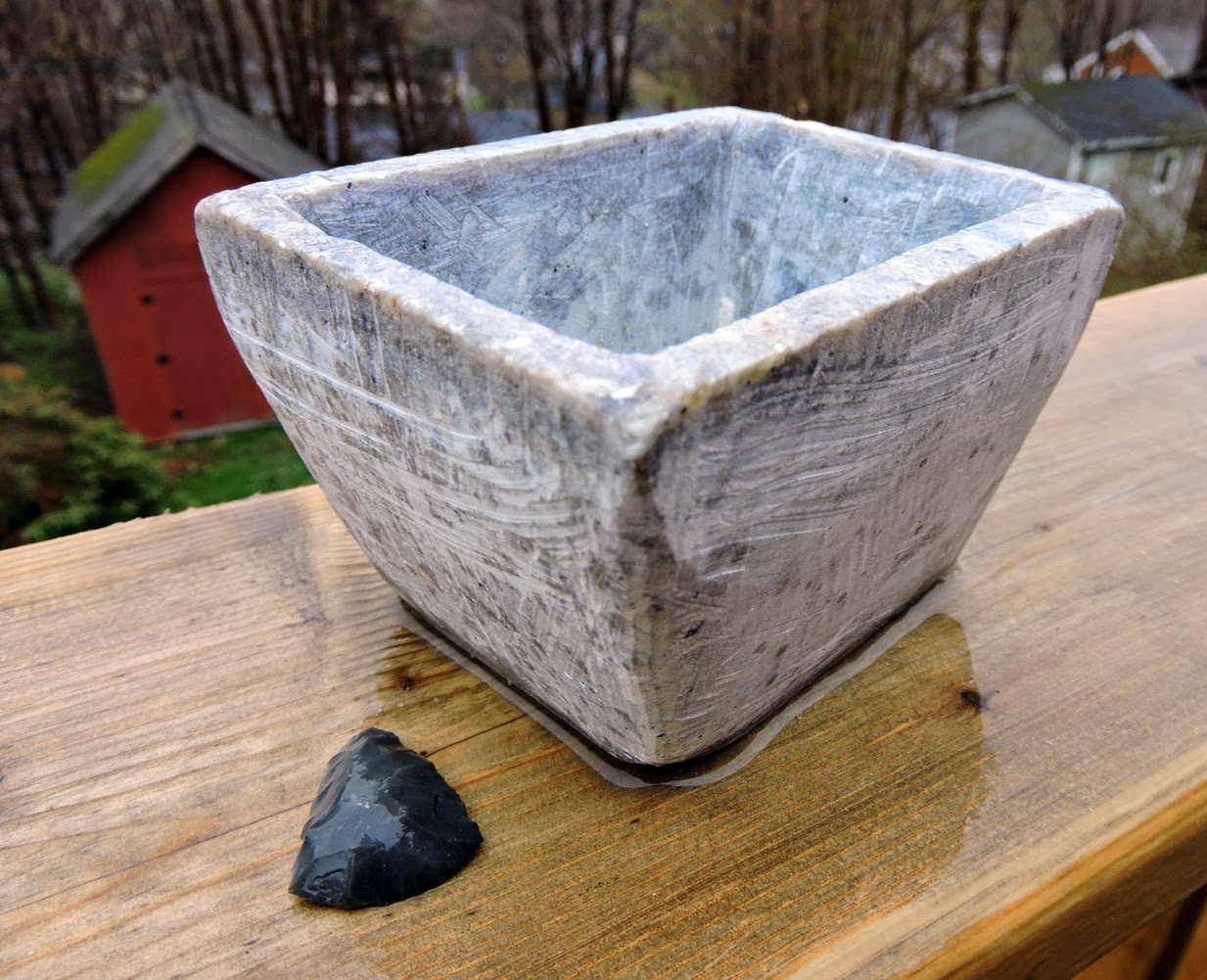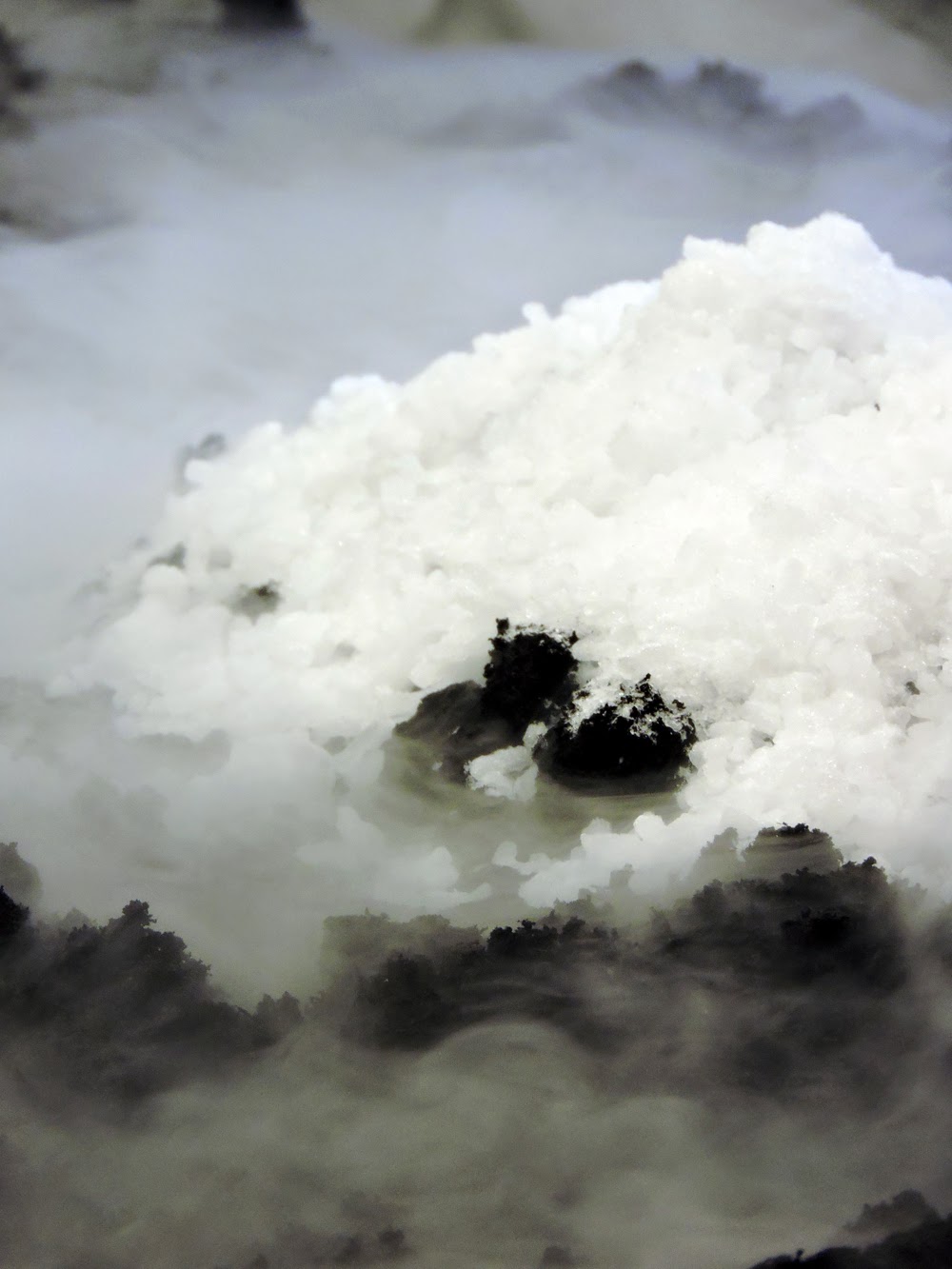![]() |
Examining the drum features and
decorations under magnification |
We're back home now and I'm going through notes and photos from last week's visit to the Canadian Museum of History with Chris Wolff. We were there to view Late Dorset drums recovered from Button Point on Bylot Island off the north coast of Baffin Island, Nunavut. The artifacts from Button Point were salvaged by Fr. Guy Mary-Rousselière, a priest in the nearby community of Pond Inlet. The artifacts are stored in the Canadian Museum of History in Gatineau and have been catalogued, displayed, and studied over the years, but there is not a lot of primary documentation accompanying them. Its an incredible collection that would make a fantastic project for a graduate student.
![]() |
| The Canadian Museum of History |
![]() |
| Some of the drum fragments |
We knew that there were two small, nearly complete drums in the collection along with hundreds of other artifacts, but we didn't realize that there would be fragments from more than a half dozen other drums as well. In total, we recorded 13 additional drum frame fragments in addition to the two near complete drums that we were expecting. It is possible that some of the fragments would have fit together so we can't say that we found 13 additional drums, but given the variability in the widths, thicknesses, and design details it looks like they represent at least 7 or 8 more drums than we were expecting. Many of these fragments were identified as drum frame parts in the catalog, although we did add a few new pieces to the sample that were previously unrecognized as drums and we raised some questions about a couple of pieces that we felt may have been mis-identified as drum parts in the past. Those questionable pieces aren't included in the photos here.
![]() |
| All of the wood pieces that we felt confident in calling drum parts |
![]() |
This drumframe may look incomplete,
but we are confident that it has just
expanded open from a small 15cm
diameter hoop. |
I was most interested in seeing the incised marks on the drum frames. I've mentioned the sequence of tick marks carved into the frame of the most complete drum in
previous blog posts, and alluded to the presence of tick marks on the other nearly complete frame. This was my first opportunity to see those marks in person and I was thrilled to see a second complete sequence of marks on the second frame. I'm not going to spoil our paper by telling you what the other sequence is or the surprising artifacts that we saw similar sequences appear on, but I will say that several of the other drum fragments also had similar tick marks on the frames. Those incised lines seem to have been a common design element on Dorset drum frames and other artifacts in the Button Point collection and I think their placement and order is loaded with meaning. When we viewed the Inuit drums in the ethnographic collection we didn't see any incised marks on the frames.
![]() |
| The incised lines are very easy to see. Here are the two sets of 8 tick marks with the line running through them that transforms them into a skeletal motif, or stylized representation of a spinal column. |
![]() |
The reproduction beside the original.
I trimmed the handle down a bit after
seeing them side by side. |
There were obvious correlations between the Dorset drums and the Inuit drums that we saw, but there were just as many distinguishing features in the drum manufacture and design that were consistent in all of the Button Point drums and drum fragments but were absent in the ethnographic drums. I mentioned some of these design elements previously when I
documented building the drum reproductions earlier this winter, but it was encouraging to see them appear so consistently across the larger sample. Things like having the drum skin rest on a beveled, rather than square edge, do not seem to be peculiarities that are unique to one or two individual drums, but consistent features that were common to Dorset drum making more than a thousand years ago on northern Baffin Island. Chris' experience as a drummer lent some insight to why this beveled edge might be significant and we have an experiment in mind to test the theory. The gouged holes on the complete frames also showed up on many of the fragments, but were absent from the ethnographic drums in the collection. We're still working on figuring out the function of those holes, but we noticed a few interesting things about their style and placement that we can report on in the publication.
![]() |
| All of the Inuit drums in the ethonographic collection had handles lashed to the outside of the frame. |
![]() |
| The two Button Point drums that had their handles intact had them inserted through gouged holes in the frames. Many of the smaller drum fragments that we saw had similar holes gouged through them, although not every gouged hole would have been suitable for a handle. There were also additional holes on the complete frame that must have served other purposes. We saw holes on the ethnographic drums that were used to tie the frame together or to tie the skin into place, but they didn't look the same as the holes on the Dorset drums. |
All in all, it was very exciting. I think there are some very interesting things that we will be able to say, not only about the mechanics of Dorset Palaeoeskimo drum making, but about how these drums fit within Dorset society and religion, and how they may be related to other drumming traditions in the Arctic.
Photo Credits: Tim Rast and Lori White


























































































